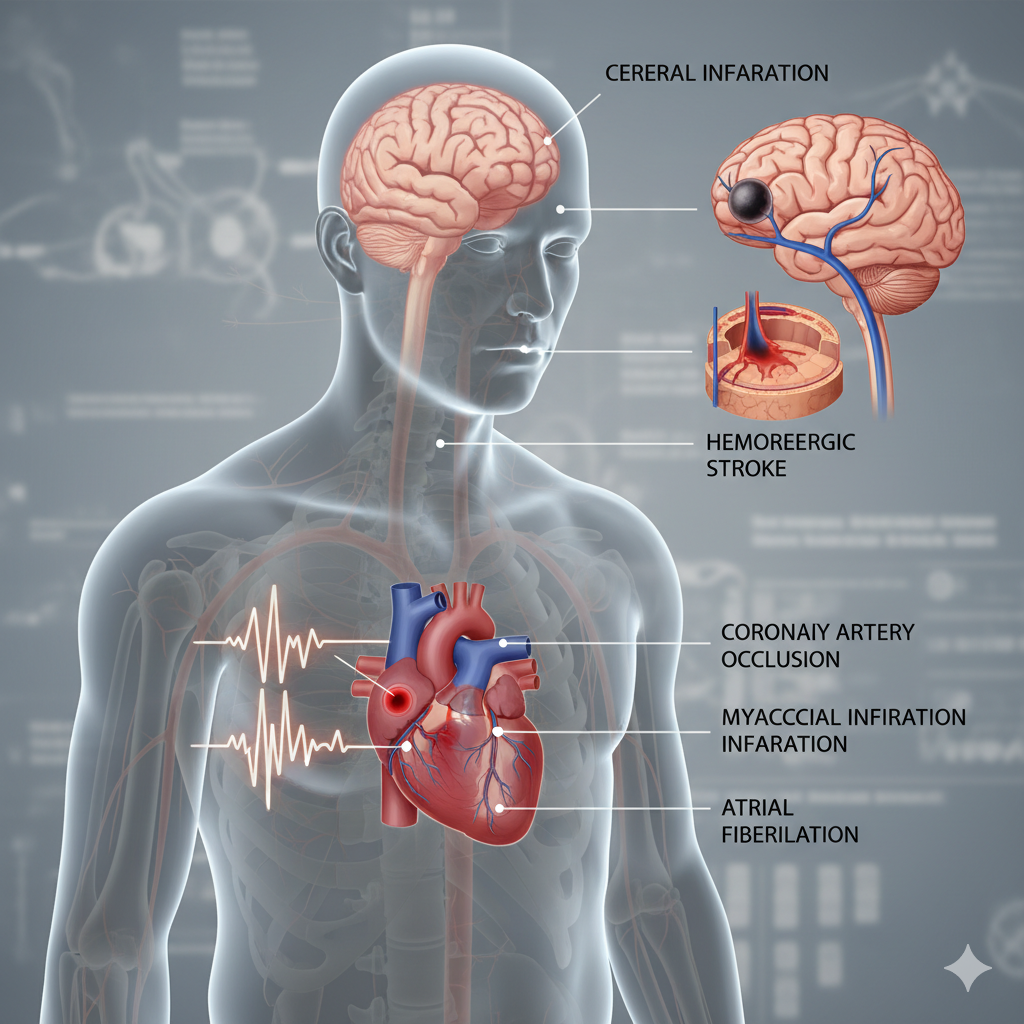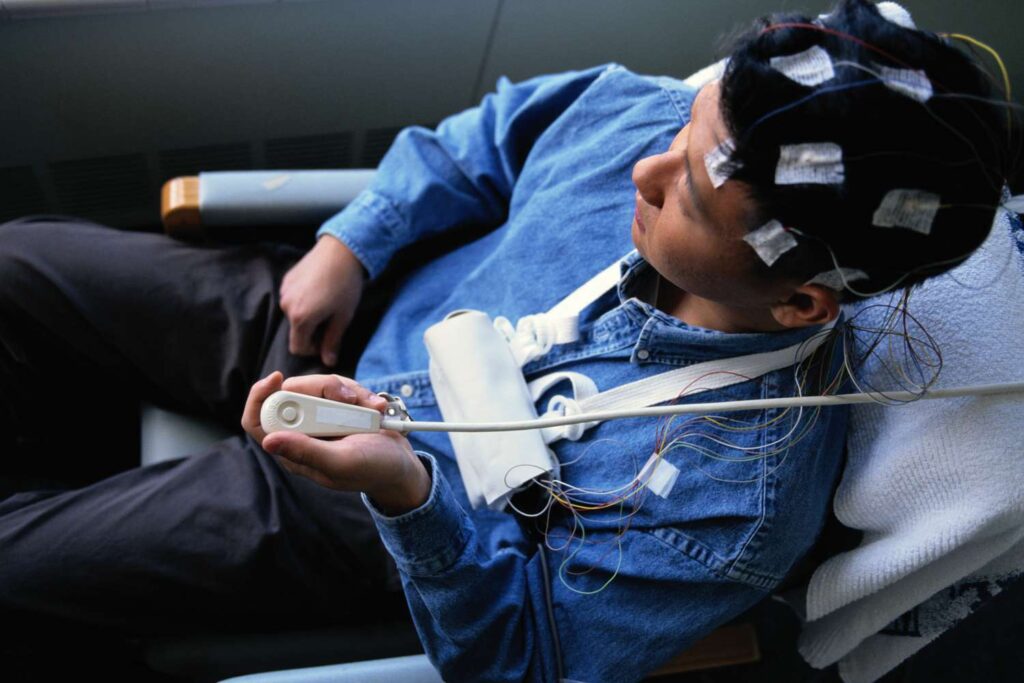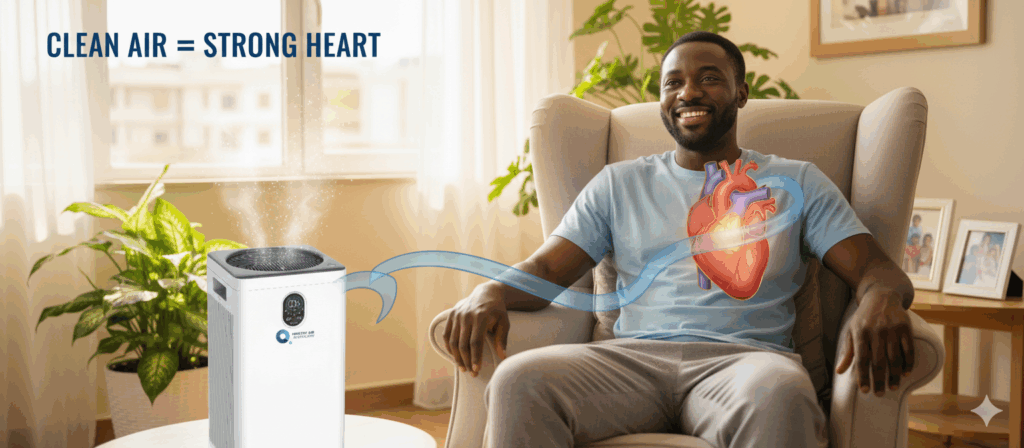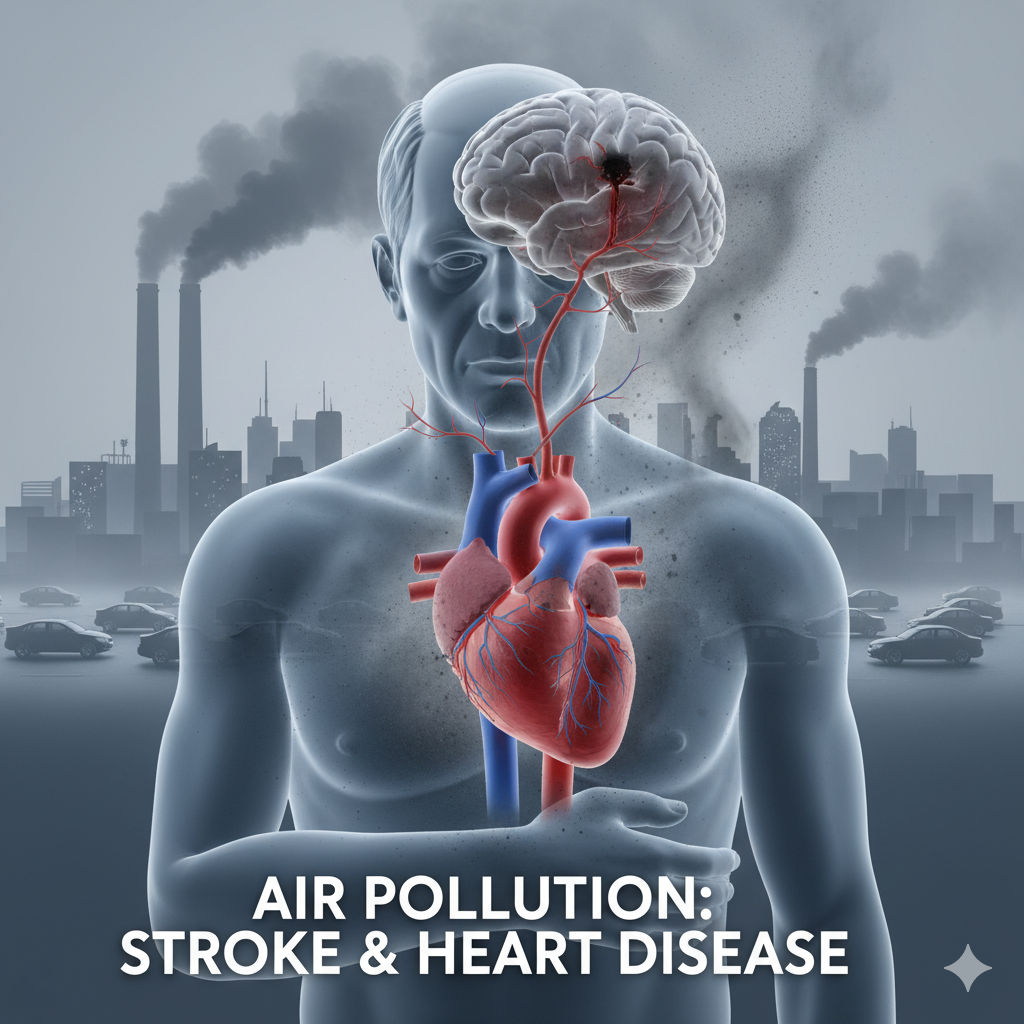It begins like any ordinary morning.
Getting ready for work, sipping tea by the dining table, scrolling through messages while the generator hums softly outside. There’s a faint headache, nothing unusual. The air carries traces of fumes from the generator and the lingering scent of insecticide used the night before.
Moments later, a spoon slips from the hand. Words start to slur. One side of the face weakens.
By the time help arrives, every passing minute steals more of the brain’s vitality.
A stroke has struck! And the unseen enemy — the very air meant to sustain life.

What Exactly Is a Stroke?
A stroke happens when blood flow to the brain is suddenly blocked or a vessel bursts, cutting off oxygen supply. Within minutes, brain cells begin to die — often leaving lasting damage or paralysis.
The truth? A stroke can strike anyone, anytime, anywhere.
And growing evidence shows that indoor air pollution is a silent but powerful trigger.
The Hidden Culprit: Air Pollution Where We Least Expect It
When people think of air pollution, they often imagine traffic fumes and industrial smoke. But the greater threat often hides indoors — in homes, offices, hospitals, schools, and worship centers.
In Nigeria, indoor air pollution is driven by:
- Generator fumes (carbon monoxide, nitrogen dioxide)
- Kerosene and charcoal stoves (fine particulate matter – PM2.5, carbon black)
- Mould from damp walls (spores and microbial toxins)
- Cleaning agents and air fresheners (Volatile Organic Compounds – VOCs)
- Dust, poor ventilation, and cigarette smoke
These pollutants do far more than irritate the lungs. They penetrate deep into the bloodstream, inflame blood vessels, raise blood pressure, and reduce oxygen supply, creating the perfect conditions for a stroke.

The Science Behind the Danger
Tiny particles like PM2.5 slip past the body’s defenses, enter the bloodstream, and inflame the arteries. Over time, this thickens the blood, raises blood pressure, and reduces oxygen supply to the brain, setting the stage for stroke and heart disease.
Recent Air Quality Indices (AQIs) in Nigerian cities show dangerously high indoor levels of PM2.5 and carbon monoxide from generators and burning of refuse.
Every day, millions unknowingly breathe air that slowly damages the heart and brain.
Every Minute Counts – Prevention Saves Before the Emergency
A stroke steals seconds — and seconds steal lives. Recovery depends on how fast you act — but real prevention starts long before, with clean air and awareness.
Here’s what individuals and households can do:
- Improve ventilation — open windows when generators are off.
- Minimize chemical sprays — opt for safer cleaning alternatives.
- Keep indoor spaces dry — dehumidify to discourage mould growth.
- Monitor blood pressure regularly and adopt heart-healthy diets and stay physically active.
- Invest in reliable air purification solutions.
Innovation that Saves Lives: The Healthy Air DNO Catalyst Purifier
The Healthy Air DNO Catalyst Purifier uses advanced D-Orbital Nano Oxide (DNO) technology to destroy airborne pollutants, pathogens, and toxic gases — releasing clean, oxygen-rich air without throwbacks or side-effects.
It helps to:
- Eliminate 99.99% of PM2.5, VOCs, mould spores, and bacteria
- Boost oxygen, purity, and mental clarity
- Create safer spaces for stroke prevention and recovery
Perfect for homes, offices, hospitals, and care facilities, it supports healthier breathing, reduces inflammation, and promotes faster recovery for those managing cardiovascular or stroke conditions.

The Bigger Picture
Stroke isn’t just a health issue, it’s a growing national emergency shaped by lifestyle, pollution, and delayed response. With rising hypertension across Nigeria, clean air must become a public health priority.
Every breath matters — and in stroke prevention, every minute counts.
Final Thought
The next stroke case could happen in any home, any office, any family.
Clean air starts with you! Choose better ▪ Protect Sooner ▪ Act Fast ▪
Clean air isn’t a luxury — It’s life support for the heart and brain.


